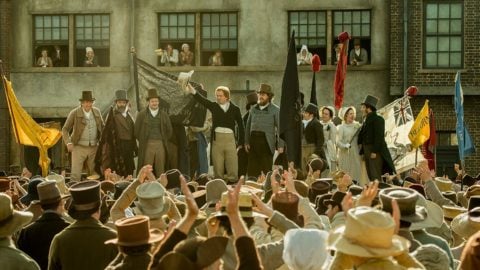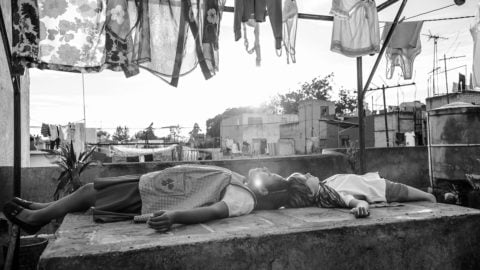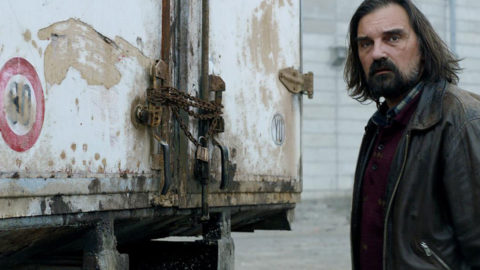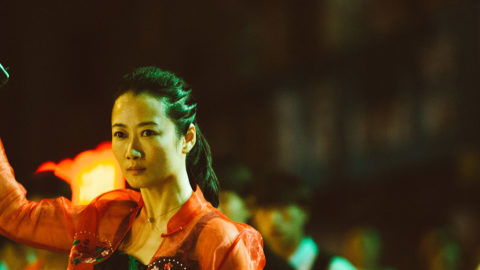Interview: Ognjen Glavonic
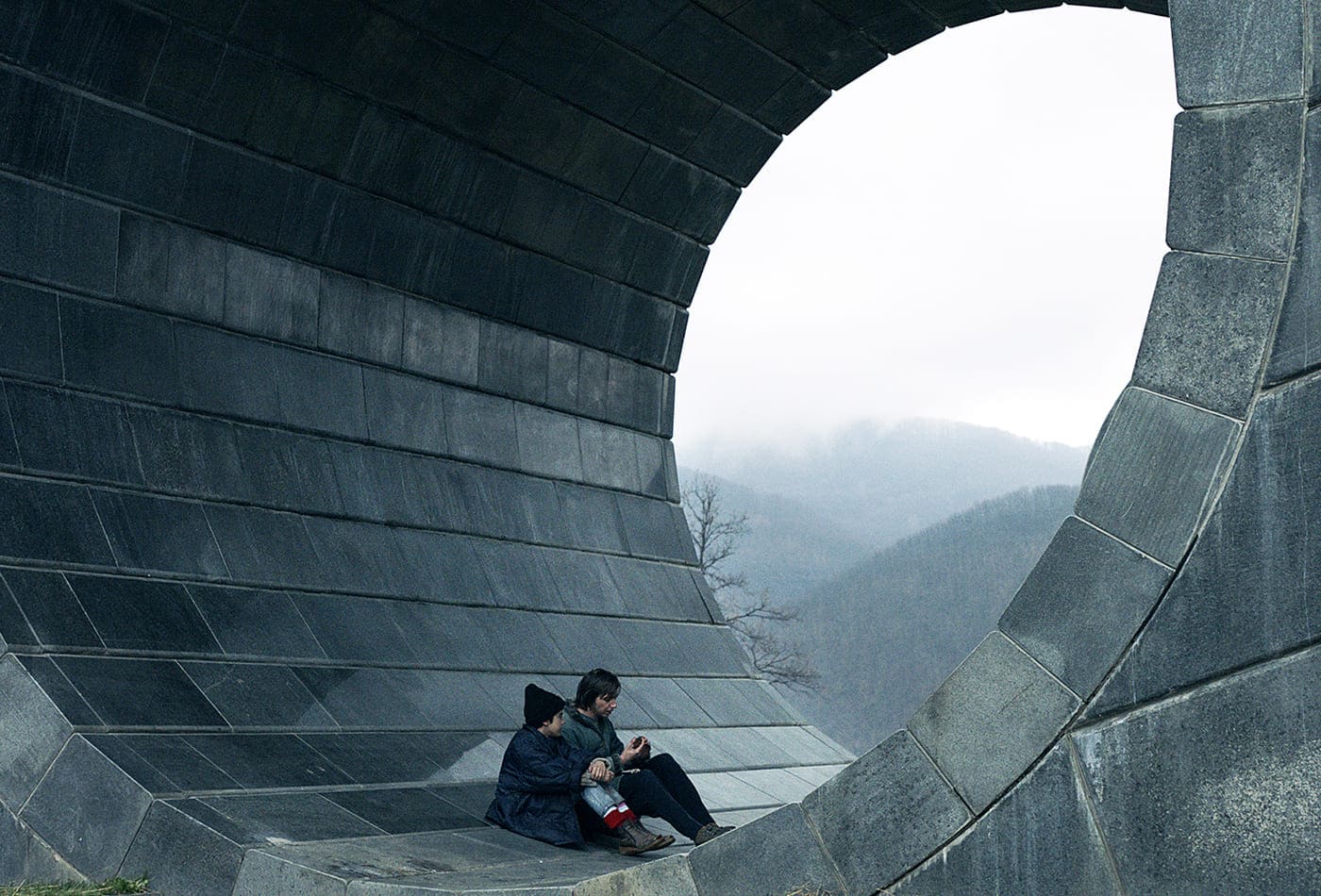
I first encountered Serbian filmmaker Ognjen Glavonic through his nonfiction film, Depth Two (2016), which screened in the Balkan competition at Dokufest, the Kosovo-based documentary festival. It was a screening of uncommon gravity, considering the location, and uncommon bravery, considering the taboo nature of its subject. Visually comprised of modern-day images captured at Kosovar and Serbian sites tracing a 1999 atrocity and its cover-up (coterminous with the last days of the Balkan wars and the NATO bombings), and accompanied by audio testimony by witnesses, perpetrators and survivors, Depth Two is a staggering work of moral exhumation. It’s a story that those in power have tried to bury, and that those who should remember have tried to forget, but Glavonic makes sure the viewer is never passive throughout the film, accumulating descriptions and details that one projects onto the empty landscapes, which keep everything not in an archival past, but in the living present.
Yet as I soon learned, this major achievement was only an offshoot of the filmmaker’s main ambition in telling this story. He’d long been working on a fiction film, and as he says in the below interview, Depth Two helped open enough doors to finally get it made. I sat with Glavonic earlier this year at the Cannes Film Festival, where his new film—the tense, tightly focused, war-weary road movie The Load—premiered in the Director’s Fortnight section. (Its North American premiere is slated for Tuesday, September 11 at the Toronto Film Festival.) Like Depth Two, there’s an elliptical quality to The Load, but otherwise the film plays quite differently, focusing on a single major character, a driver who’s charged to drive mysterious cargo far out of town, no questions asked. As a late spring rainstorm rattled against the canopy of the beach tent sheltering us, we talked about the long journey to get the film made, as well as the evolution of a story that aims to be both damningly precise to a time and place and metaphorically suggestive of truths and mentalities that every nation tries to deny about itself.
How did you get into filmmaking?
I got into films very late. I got hooked on film when I was 19, 20. I never watched a lot of films before then.
I was late too—I didn’t start writing about film until I was 30. I watched movies, and I cared about them, but I was more of a music person—that’s what I wrote when I was younger.
I was interested only in music until I was 20. We didn’t have anywhere to watch [movies] in my city. There was one cinema that screened only Hollywood and Serbian films. I lived close to Belgrade, but didn’t have any friends that were cinephiles, I didn’t have any friends who went to festivals and followed that kind of scene. The crucial thing for my generation was faster internet. Piracy.
What year was that?
2003, 2004. The father of one of my friends sold pirated discs, so his collection grew larger and larger and we were like, “What is this?” I had this really funny disc called “Cinemania 97.” You click and it’s [reviews by] critics from Roger Ebert to Pauline Kael. Before seeing any of these films I was clicking and reading reviews. It was like a database of films for me. That’s how I would choose—I would ask my friend, “Can your father get this?” And then when I got my first CD/DVD burner I would burn like six films on a DVD and send it to someone. Complete piracy, of course, illegal. But these were classic, older films, not really new. That’s how it started. A sort of obsession and passion
What kind of films were you obsessed with in the beginning? Any particular genre?
I think the first one was Clockwork Orange. And then I really liked Jarmusch’s Stranger than Paradise, Elephant Man, Eraserhead. Then I liked Buñuel and Kieślowski, Tarkovsky. It started with these guys, the classics. I was like, “Wow! Cinema can do this?” And it was also a moment when I was in some bands. But one of those bands that I put a lot of passion and work into was falling apart. I was studying at university, I was studying law, which I didn’t like. So I was like, okay, let’s watch films. And I was watching five films a day for a year and then I was like, well maybe I can make one. I didn’t know what a director does. I didn’t know anything. I told my parents I wanted to study film, to leave the law. They said, “Are you crazy? What are you going to do?”
But you did it.
I tried for the first year and they didn’t let me in [to film school]. It took two years to get enrolled. It’s really hard to get into [Faculty of Dramatic Arts in Belgrade]. There’s six days of tests. It’s an old system, but it’s really good because when you go through it, then you better be sure that you want to do this. Be sure you have what it takes to do it.
There are six days of testing to get in?
Yeah, and there’s a lot of pressure during those six days. It’s a test of knowledge, not only of cinema but of culture. Thirty questions. Then you have to shoot a film of 10 minutes. Then they show you a film and you analyze it, and you have like one hour to do it. That’s only the first day. Then the second day, if you pass it, you show them your films and then you have an interview with the full commission. There’s like six of them for 40 minutes asking you whatever they want. “Why do you have your hair like this?” “Why do you have these shoes today?” “Why did you do this in the film?” “What does it mean to you? You think it means the same to me?” Then if you pass that, the third part is three more days. One day you shoot on location—they give you a camera with 15 minutes, you have to make a documentary—silent—in three hours. You have to edit 15 minutes into three minutes. That’s one day. The second day is working in a studio for one hour using two cameras. You take a paper that has only the beginning of a scene, and you have two actors—a man and a girl. A girl is taking a shower; a strange man enters the apartment. You have one hour to finish this situation. And then on the third day they watch those two films you made, and also interview you, except the interview is on a film stage. They watch it in a cinema. And that is the six days.
It’s like an entire film school collapsed into those six days.
Yes. [Then once you’re in] you’re learning all that you did already [for the test] but more in depth. It’s a school for theater and film and radio and TV. We had directors, sound designers, editors, directors of photography.
It must be great to be with all those people in the same space, both for exchanging ideas and for eventually gathering together a crew of your fellow students.
Exactly. When I think about it now, it’s not what you take from the professors, it’s also what you take from each other, because you have to work with people from other categories, like DPs. The first open chance that you have to make a film, the first time you are free to make the film you want, is the third year.
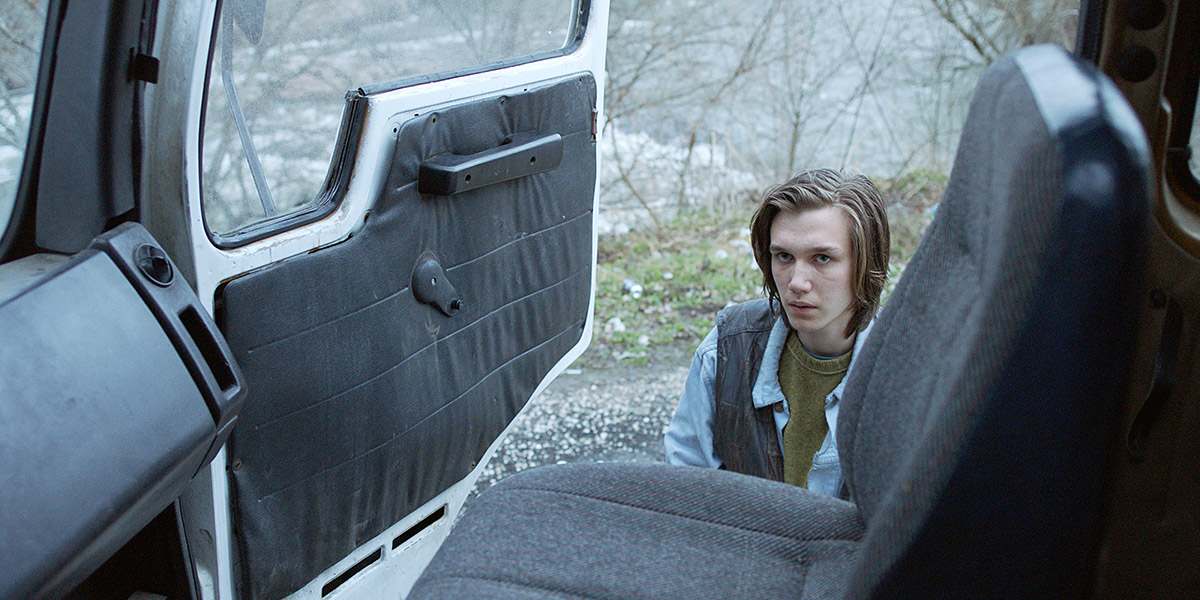
Did you make anything during that time that you were proud of?
There’s some short films that I’m really proud of, as well as my graduation film. In 2008 I made a 20-minute portrait of Zivan Pujic, who is a punk-head. And then my first [feature] was about him making a music festival—it was called Zivan Makes a Punk Festival. Then when I finished school I started working on The Load, which took seven years to finish. In these seven years I made some documentaries because they made their own money and I wanted myself to be occupied with filmmaking and not producing.
The Load took so long to produce because you knew it would cost more to produce than you had at the time?
Yeah, it’s the first film where I knew that I needed a budget. It is a drama film, yes, but it is also a road movie at its the center, and has aspects of war films, it needed some special effects, and it’s a period piece—even if it takes place just 20 years prior. It’s also a road movie—none of the cars you see in the film are older than 1999. I knew we needed a normal budget and I wanted to pay people. It took a lot of time. This subject is touchy in my country. We didn’t get money from the film center—we were denied seven times. In the end we got it, but seven times means seven years. Five different people said no—probably because of the subject, but I also think it was because of the form of the film. Maybe it was too modern or contemporary for them. The people who sit in these commissions are coming from a different age, a different way of thinking. But I’ll never know. Meanwhile I was always preparing and researching.
I’m interested in how you had a script based on this subject, but in the meantime you made a documentary on the same incident, Depth Two. How did the fiction script change in the end because of Depth Two?
I got interested in this story when I was faced with my lack of knowledge and curiosity about this case. Among my friends, among my professors—they didn’t know anything about it. So I wanted to make a film about the case that could be a place of knowledge, a place of reflection about our very recent history. Not to shy away from it. That was the beginning. I finished the script in 2012. It was a film about one day in a guy’s life. He’s starting a new job taking a truck from A to B. He doesn’t know what he’s transporting, but during this trip he learns the truth about the cargo. And also, through that, the truth about himself, and the truth about the country. It’s basically about a revelation, a discovery of the truth and the questions you ask. I had done a lot of research—listened to a lot of testimonies, read a lot of transcripts from the people who participated in this crime. But I didn’t want to include this in the minimal storyline [I’d planned]. And so from the fiction film came Depth Two. I touched on a lot of stuff that was in the script already, but there’s more about the organization of the crime, a geographical mapping of where the crime took place. And of course there are testimonies—about our culture of silence, about our conspiracy of silence. That film was made in 2016, and it made more people interested in my fiction film.
But then I looked at the script and thought, “Why make a film about this man?” It was a story I learned 10 years after the fact, and the images I had in my head came from the research. What do I remember from that time? Because I do remember the 1999 NATO bombing: the bombs, the paranoia, the fear. It is the only memory I have of it. So I said this film should be about the clash between my memory and experiences and the images that were prohibited at that time, that I came to learn later. It slowly became a story about what one generation left to another. Not only the war, not only the ruins, not only the crime, but the silence and the stories they didn’t want to tell, that they tried to hide, that they didn’t know how to articulate or were afraid to articulate. Making this film for me was a way of speaking. I wanted to just speak freely and not avert my gaze. I started re-looking at the script and realizing how to make this into a film. That is why you have the character of a hitchhiker, the character of a son, the little kids at the wedding—all these side stories—they’re all me. It’s all my memories. It finishes with a kid who says, “I want to make a band.” Start again.
This is not only a film about the generation our parents left to us. It’s also about the values of the country that they were born into, created in the struggle of a previous generation, the generation of our grandparents—before the evil fascism and Nazism—who created this country on those values of anti-fascism. We have the day in the life of a guy who was brought up in this country and is realizing that he betrayed his father’s legacy. His father was a veteran of parties fighting the Germans and the Italians and the collaborators and now he realizes he is part of a crime that is fascistic in its nature. It’s also about the breakup of this country, of these values. Everything you see in the film are remnants of that country: the monuments, the postcards, the photos, the lighter. When I found the story I said, “Okay this is the end, everything has to lead to this.” Everything has to lead to the story of him opening up to his son.
It’s interesting how your original concept is very action-based, very efficient and linear. The film still has that linear structure, but now it also opens up in these other ways, taking us out of the car, and down these pathways to glimpse the lives of others we encounter along the way. Was it tricky figuring out how far away you can take us from road, and how often, without entirely losing the trajectory and momentum of a driver delivering a load?
It’s something I learned from Depth Two: it’s not about what your show, it’s about the images you create in the head of the spectator. It’s what you don’t give. It’s what opens a place for a spectator to connect, to finish it. So I knew that when you read [the script], it sounded like an action film, like a war film. But from the moment I started working on it I also knew that I would never treat it as an action film, as a spectacle. You will never see the war. Instead you will feel it, it’s in the background. It’s these feelings of occupation, of isolation, that create the tension. But then not much happens—he’s driving, and we’re with him. I set up the tension, but how do I keep it? So we start making these strange [digressions] following these strange [characters]. At first glance they aren’t related to the story, but they are the story. It’s the ideas of transmission and heritage. Transmission from one generation to another became the transmission from one film to another. I start the film as one thing and then I go into things that are, for me, more important. I needed this first part to hook you, to offer you to be with the characters and to know as much as the characters do about this situation. To be respectful to your imagination and your curiosity in the beginning, to keep you with him for the first 20 minutes before things start to change. For me, this was the structure. I didn’t want to have a circle, or like a polished shape—I wanted to have this straight line, but there are branches.
I remember feeling anxious whenever he strays from the direct route, whenever he gets out of the car. Because the instructions he’s given, made explicit in the dialogue and implicit in the structure, are do not stop. So I’m really paying attention whenever he does.
I played with these genre tropes, like—the bridge is out, so he has to go to unfamiliar territory. There’s some sound that’s coming from the back of the truck. He’s alone, you can see that this sound is bothering him, and you can see that he’s alone with his thoughts about it. Then when he has to take yet another road, the hitchhiker appears.
You’re never explicit about what’s happening, either in the back of the trunk or off in the distance, where the guns and bombs are going off. Why do you leave so much unexplained?
I didn’t want to use this as a platform to distribute information, messages, truths. For me, the biggest imperative is the search for it, and not only my search, but your search for the meanings. So, for me, it’s about being respectful to your imagination and your curiosity. To say, okay, you’re a human being with emotions, you’ve seen many war films, you can create your own film in your head. If it’s going to be action or a genre film, okay, but I’m not showing you that, I’m leaving it. Like John Ford said—when I want to send a message, I go to the post office. For me, it’s not respectful to the medium to use a film that way. I really didn’t want to take this subject and make it into a spectacle. I really wanted to take that space of silence and create a space of knowledge. And not only knowledge about recent Serbian history, but also a knowledge that anyone can connect to. And if I was too insistent on showing that it was only something that happened in one country, where one people did something to another people, I think it would be a weaker film, because it would be only one thing, and this way it is different things at the same time. The story, for me, is a starting point, a skeleton. The meat, the muscles, the brains and the soul of the film, are somewhere else. For me, the way you tell the story is more important than the story itself.
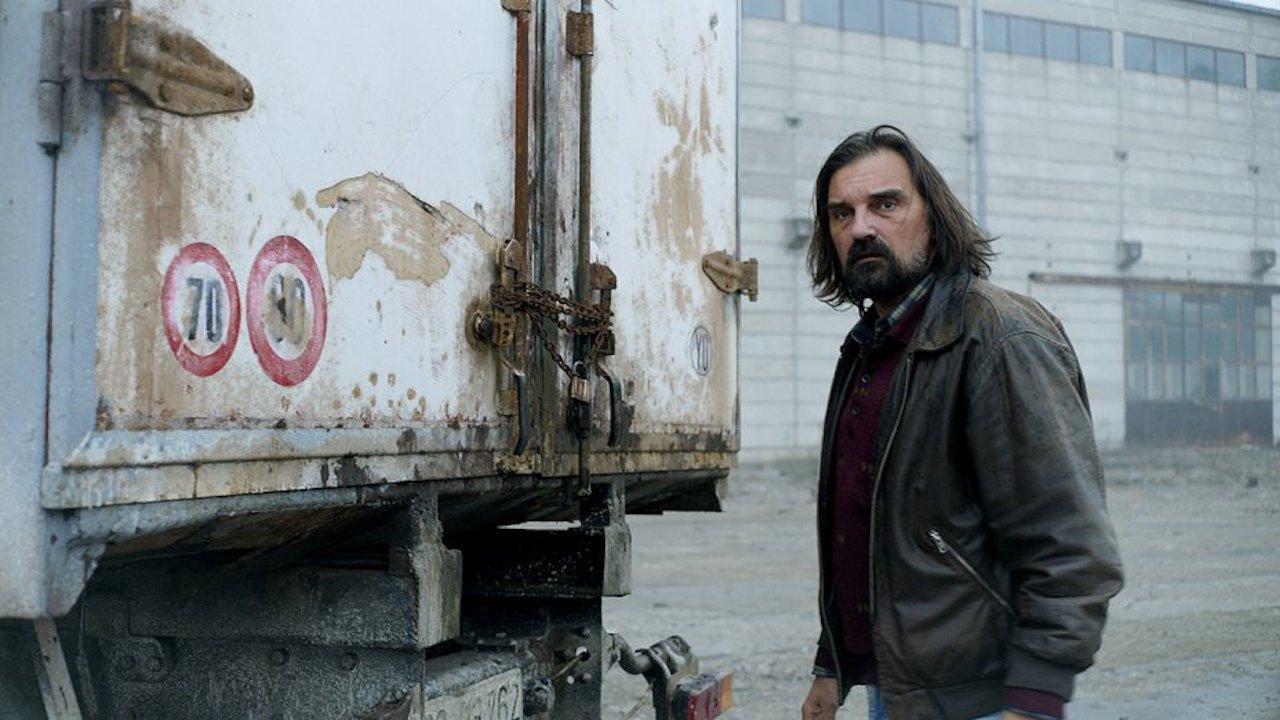
Even though you’d filmed at the actual locations where these incidents took place for Depth Two, you didn’t do the same for this fiction film. Why is that?
One thing is that Depth Two was shot by three people, three of us in a car shooting at actual locations in Kosovo and Serbia—the sites. But for [The Load] the crew was 80 people. So, it’s not only organizationally impossible to go to Kosovo, to the sites, but it’s also financially impossible. I had to choose locations that are close to Belgrade. But I was able to be true to the atmosphere, they didn’t have to be real locations. And I didn’t want to use [the real locations] as a fetish—it would be unfair.
You’re dealing with an event that actually happened, but your decisions aren’t dictated by the documentary impulse as they were with Depth Two.
Yes, it’s based on a true story, but I never say that anywhere. I hate films that say that—because you have to show it through the film. But then even if you’re making a fantasy, it can be true. Art is a lie that is helping us see the truth. Of course it’s fake, of course I didn’t return in time and shoot the film in 1999. But there’s a bigger question of truth today—what is truth, and how do you articulate it? It’s connected to the rise of nationalism, populism, fascism, and chauvinism in the world today. And I come from a country that’s in the avant-garde in this kind of creating of paranoia, the creating of an army that will protect these fake truths. I’ve lived my whole life in it, so it’s easy to recognize when it’s happening around you, that it’s happening now. Because this way of saying something is true when you know it’s not—you’re just increasing the number of people who are willing to participate in a lie, to live life in a lie, to say yes to the relativization of the truth. And I think that art should be a place where you fight this kind of thing. It’s a place of education, yes, but it’s also a place of communicating differently than when you’re speaking about these daily political subjects. The political talking in this film comes from the choices you make—by telling the story, not only by choosing the story.
There’s still divisions and debate regarding what happened in this incident?
Even still, more than half of the country has never heard about it. Of those who have heard about it, more than half of them are saying that it is a lie, that this never happened. I never wanted to get into these arguments—if it happened or not—or make a film to prove that it happened. I just said, “Okay, it happened.” The problem of today is that people are debating facts—you can’t do that with facts. You can say it’s not true, but my starting point was that it happened.
You’re starting from a fact, then engaging with it though art.
I’m communicating differently about it. I’m not going to communicate about it on the level that [others] want me to communicate about it, which is completely hideous. It’s like killing them again. It’s killing the truth. Not only killing people and covering it up with silence, it’s like taking their voice away again. I wanted to give voice to something that’s hidden, something nobody wants to talk about. And I think that every country in the world has crimes, is built on crimes that they don’t want to talk about.
Eric Hynes is a journalist and critic, and curator of film at Museum of the Moving Image in New York.



